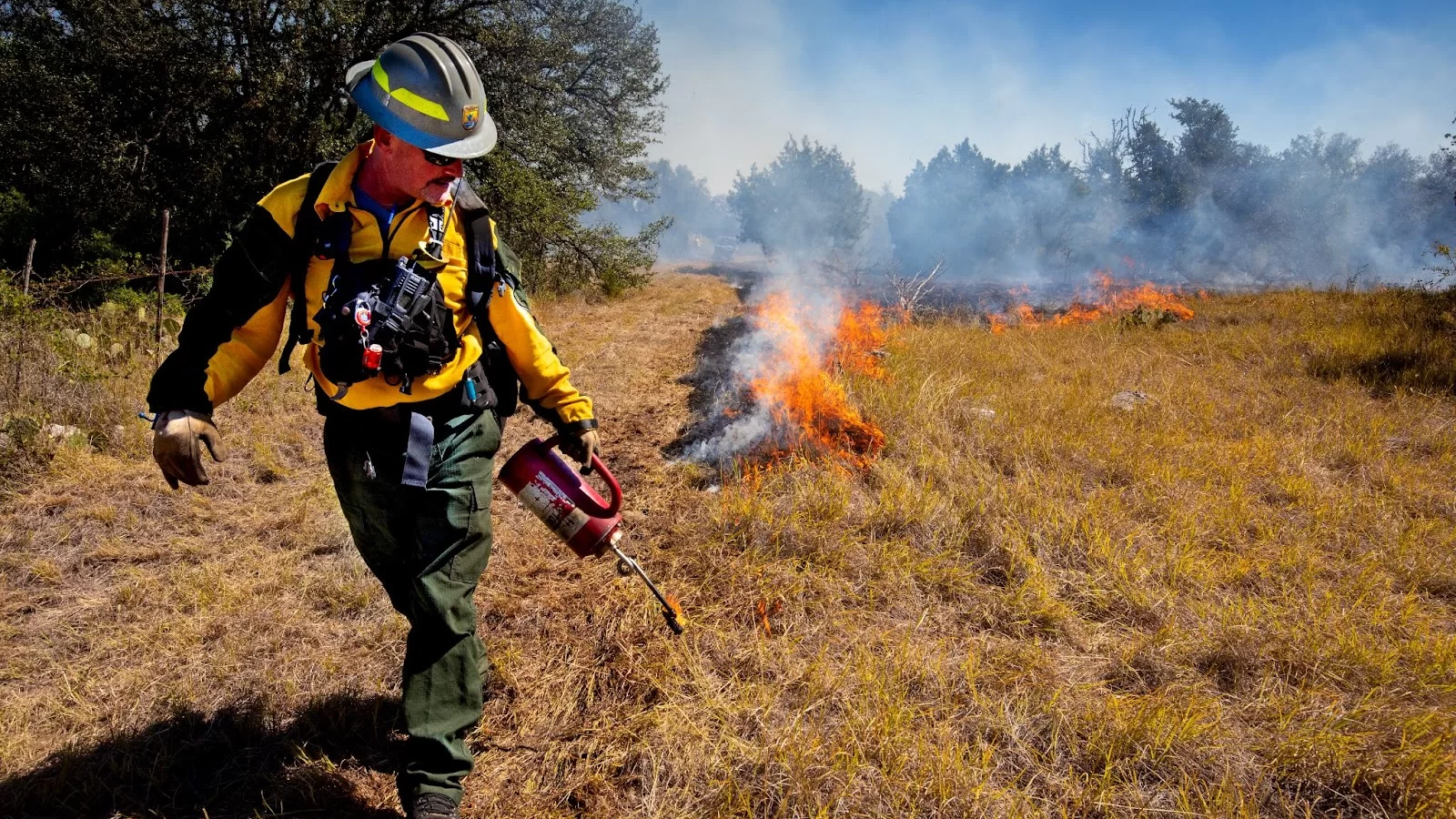The U.S. Fish and Wildlife Service (USFWS) Fire Program is a small agency with a big mission—to protect threatened and endangered wildlife species and their habitat.
The execution of this goal is threefold. In addition to fighting the wildfires that plague wildlands and wildfire prevention, the agency carries out prescribed burns for 50% of all fire acres managed by the Department of the Interior agencies combined.
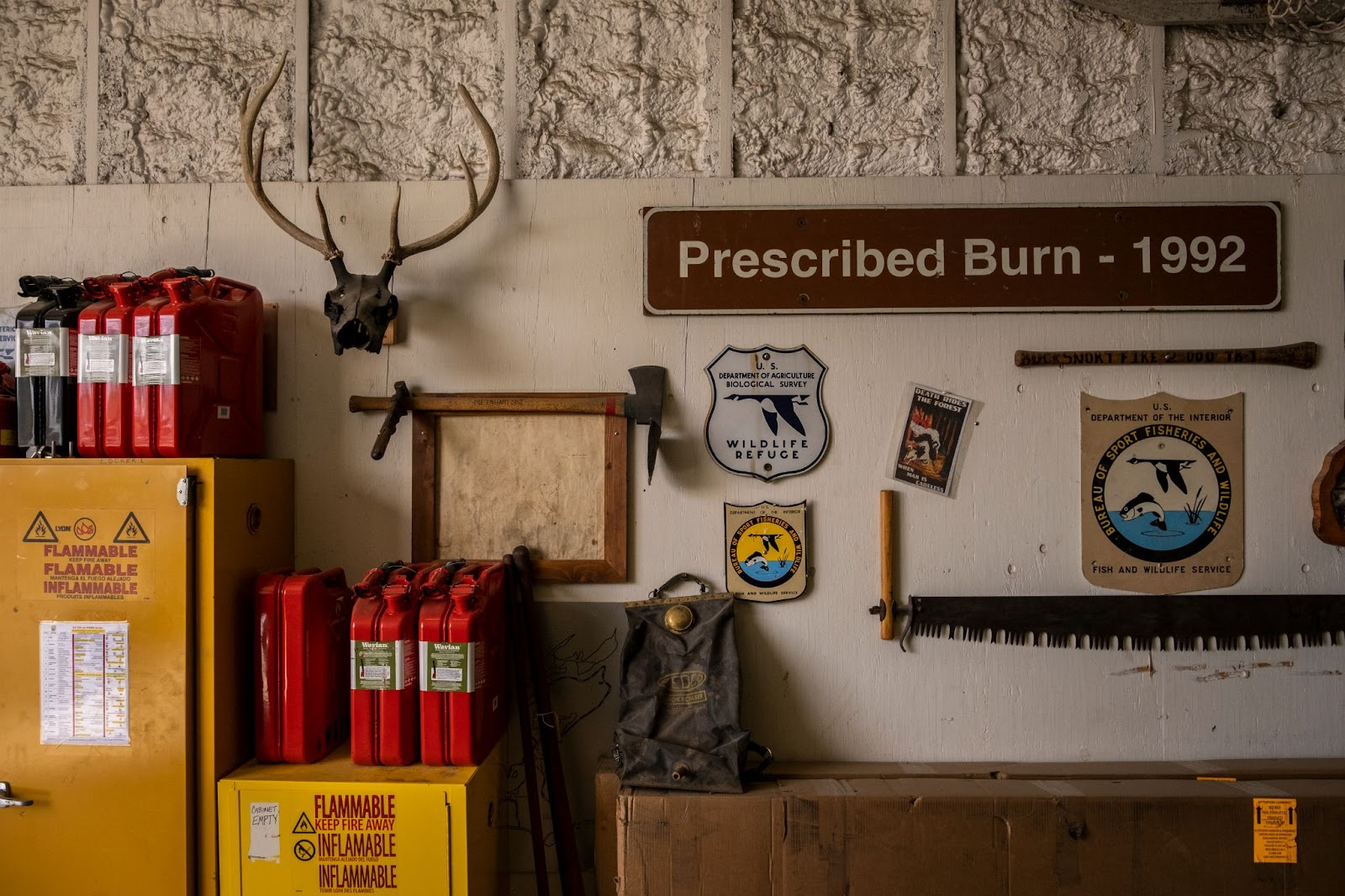
USFWS Fire gear | Photo courtesy of USFWS + Tandem Stills + Motion
Prescribed burns are important for fuels management in the prevention of wildfires and can be a valuable habitat enhancement tool for wildlife.

Owl onlooker | Photo courtesy of USFWS + Tandem Stills + Motion
In an effort to advance these efforts and preserve their legacy, the USFWS Fire Program is currently engaged in recruiting a new generation of conservation-minded stewards who are aligned with the agency’s mission.
“As a smaller wildland fire agency, we have the ability to create an inclusive, welcoming fire family that is perfect for those looking to start their fire careers, spend their entire career, or simply find a place where they belong,” USFWS Fire Program says.
Kinute caught up with U.S. Fish and Wildlife Service Public Affairs Chief Kari Cobb in a recent interview. Cobb helped to illuminate the purpose and importance of prescribed burns and highlight successes that have been realized as a result.
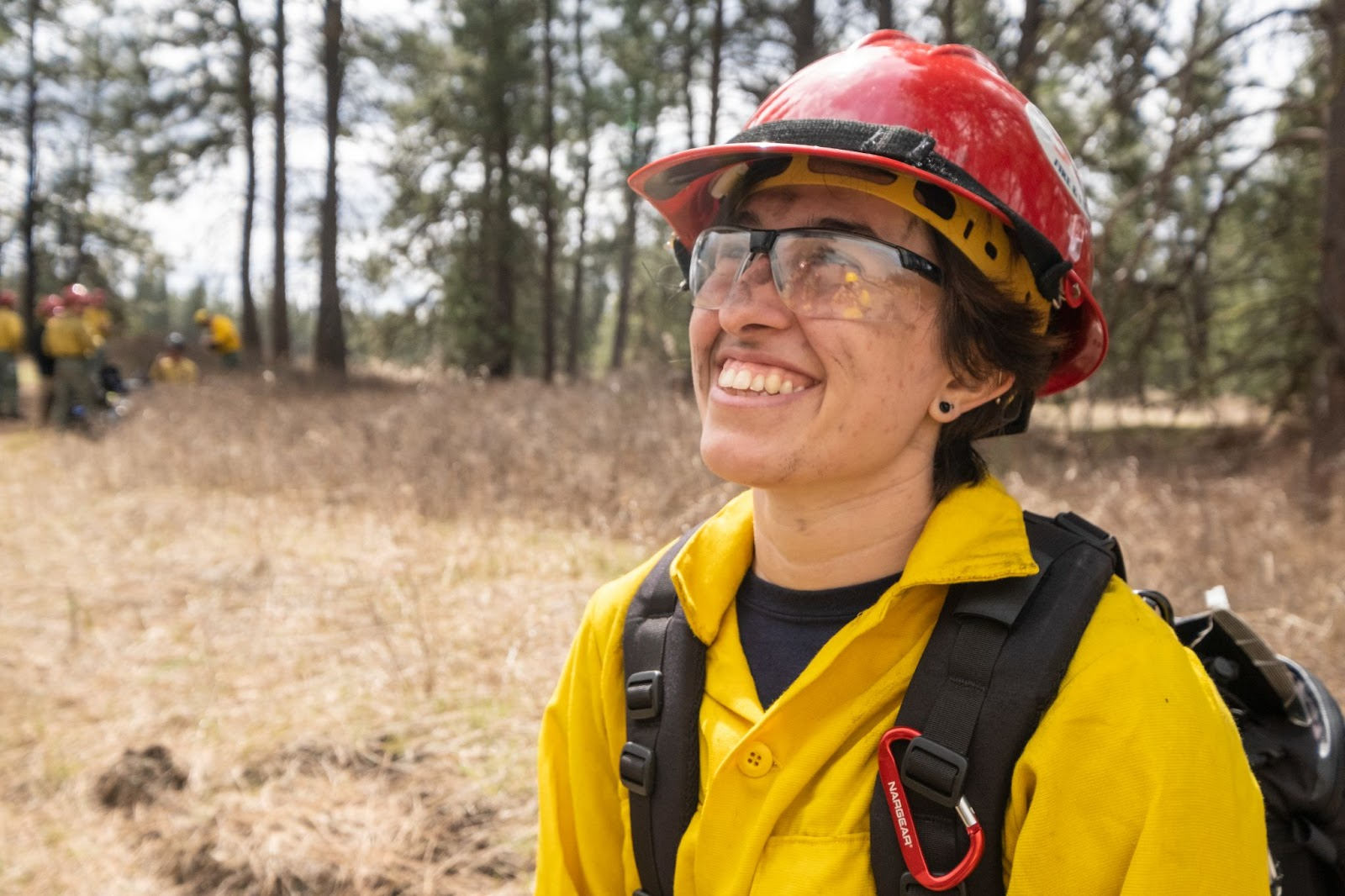
USFWS Firefighter in the field | Photo courtesy of USFWS + Tandem Stills + Motion
How do prescribed burns improve habitat for threatened and endangered species?
When carefully planned and executed, prescribed fire plays a crucial role in improving habitat for threatened and endangered species. Prescribed fire mimics natural fire regimes, helping to restore ecosystems to their historical and more natural state. Many habitats, like grasslands and certain types of forests, have evolved with periodic fires. These fires can clear out invasive species, reduce thatch buildup, and promote the growth of native vegetation that some endangered species rely on for food and shelter.
Prescribed fires also encourage the growth of a diverse range of plants, which in turn supports a variety of wildlife. Some threatened or endangered species depend on specific plants or landscapes that benefit from these low intensity fires to thrive. Prescribed burns can help create or maintain corridors between different habitats, enabling species to move and migrate more freely. This connectivity is crucial for the survival and genetic diversity of some endangered species. Certain animals, including some endangered species, benefit from prescribed burns because the resulting open spaces and regrowth provide better foraging grounds or create suitable areas for nesting and reproduction.

USFWS Fire Program conducting a controlled burn | Photo courtesy of USFWS + Tandem Stills + Motion
How are these species safeguarded during the burning process?
Prescribed burns set by the U.S. Fish and Wildlife Service are carefully planned and executed in coordination with wildlife biologists, ecologists, and fire personnel to ensure they benefit the targeted species without causing harm. Timing, intensity, and frequency of burns are crucial factors that need to be considered to maximize benefits for threatened and endangered species while minimizing potential risks.
Prior to any burn, areas that contain sensitive wildlife will be excluded from the burn plan. Fire personnel will frequently remove hazardous fuels near known sites [by] hand and will continue to monitor the area to ensure the prescribed fire does not impact the sensitive area or nesting site.
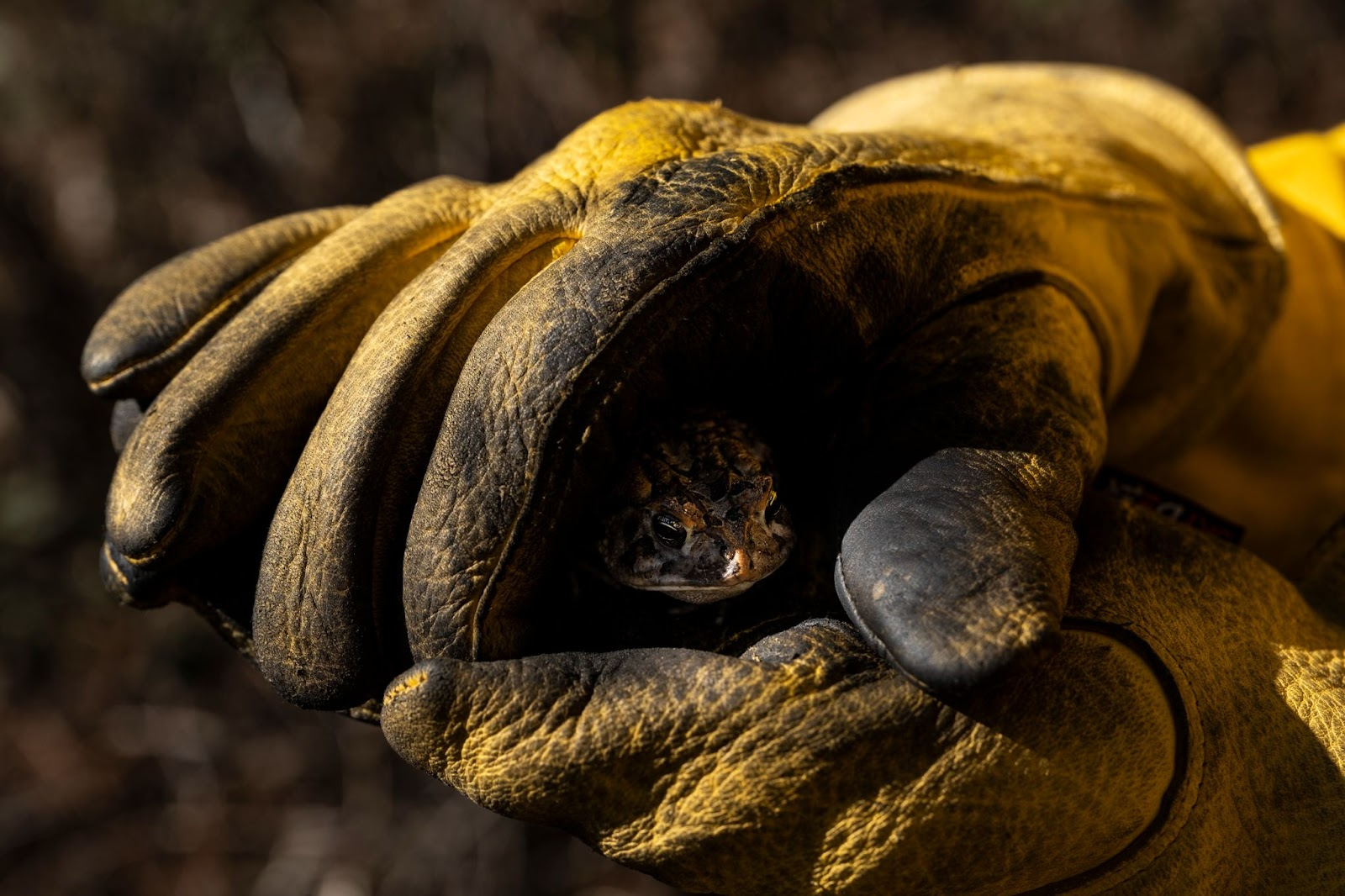
A toad peeks out from USFWS firefighter’s gloves | Photo courtesy of USFWS + Tandem Stills + Motion
Can you share a success story from the Fire Program's work?
The success of the USFWS Wildland Fire Program lies not only in its ability to manage fire effectively but also in its commitment to balancing fire management practices with conservation goals, ultimately benefiting ecosystems, wildlife, and local communities.

USFWS Fire Program controlled burn | Photo courtesy of USFWS + Tandem Stills + Motion
A few different types of successes that may be of interest:
—Since March 2018, fire management program staff at Balcones Canyonlands National Wildlife Refuge has implemented a series of prescribed fires as part of a special project to enhance habitat for monarch butterflies and other native pollinators on private lands in Texas. The project has enhanced 7,200 acres of pollinator habitat by working with private landowners to improve habitat and increase milkweed and nectar plant availability through the careful application of prescribed fire to important areas. Milkweed is vital for monarch breeding and nectar plants support the spring and fall migrations.
—After conducting a 47 acre [prescribed] fire at Fox River National Wildlife Refuge in central Wisconsin in May 2023, refuge staff were greeted with a beautiful palette of lavender purple from thousands of wild lupine (Lupinus perennis) responding to the recent fire disturbance. Fully mapped out, there were 20 acres of flowers. Wild blue lupine (Lupinus perennis) is the sole larval food source of three species of butterfly listed as endangered and is crucial to their survival: frosted elfin (Incissalia it-us [Godart]), Persius dusky wing (Erynais persius [Scudder]), and the Karner blue butterfly (Lycaeides melissa samuelis [Nabokov]).
—Fire crews are supporting the recovery of the critically endangered California condor at Hopper Mountain National Wildlife Refuge in California, a high mountain valley encircled by deep canyons, rock pinnacles—and a high abundance of condor nests. These nests are crucial to recovery, as condors lay just one egg per nesting attempt.
For more information, visit: https://fws.gov/program/fire-management or watch this YouTube video.
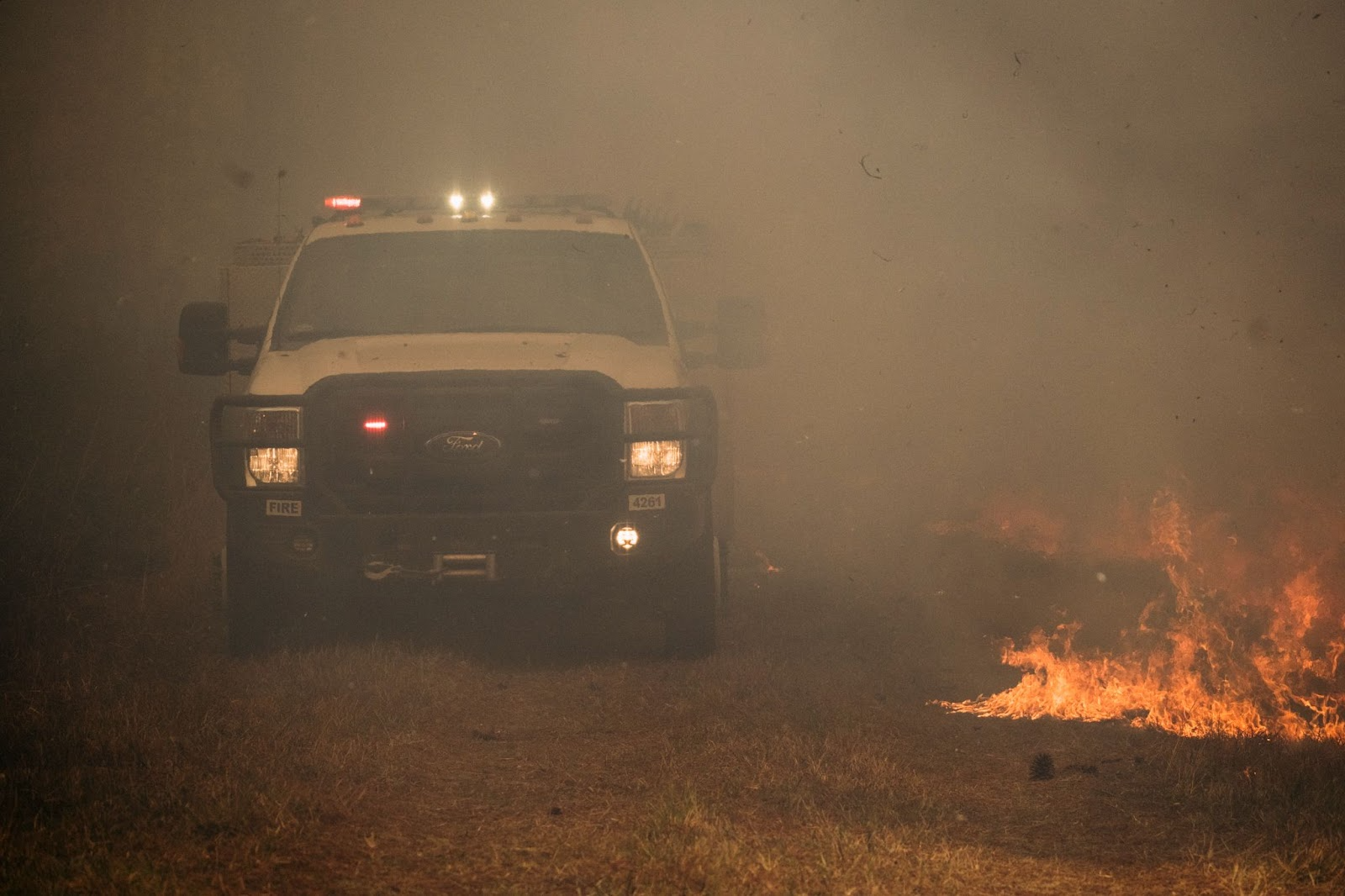
USFWS Fire Program truck at a prescribed burn | Photo courtesy of USFWS + Tandem Stills + Motion
